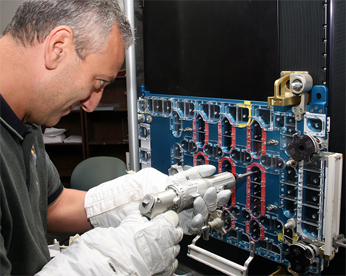 |
About two weeks ago, the crew of seven astronauts that is preparing for the Hubble servicing mission (SM4) invited me to come to the Johnson Space Center (JSC) to give them a series of talks on Hubble science. I was, of course, very happy to oblige. I arrived to JSC on October 20, and the entire morning of October 21 was reserved for my presentation. The fact that the crew were able to accommodate such a presentation in their busy schedule was the result of the delay in SM4, which was originally planned to take off on October 14.
So here I was, arriving on a date on which if all would have gone right the crew would have been in space!
Even though I believe that I give reasonably good talks, I thought that the crew must regard my presentation as a rather poor consolation prize. Still, I was extremely happy to see again Scott Altman, Gregory Johnson, Megan McArthur, Michael Good, Andrew Feustel, and my old friends John Grunsfeld and Mike Massimino. These are a real life “magnificent seven.”
As expected, the crew members did not hide at first their disappointment from the fact SM4 had to be postponed, and neither did I. Yet, as my presentation of a series of recent HST results went on, they became more and more engaged. They started bombarding me with questions about how the new instruments (that will be installed on board HST during SM4) would contribute to the scientific questions I was discussing. By the time I finished, none of us was looking back. We were all again sharing the excitement of the grand things that the telescope would do after SM4.
On the way to the airport Massimino told me that my presentation helped renew the enthusiasm of the crew towards the mission. I could not have asked for a bigger compliment.


